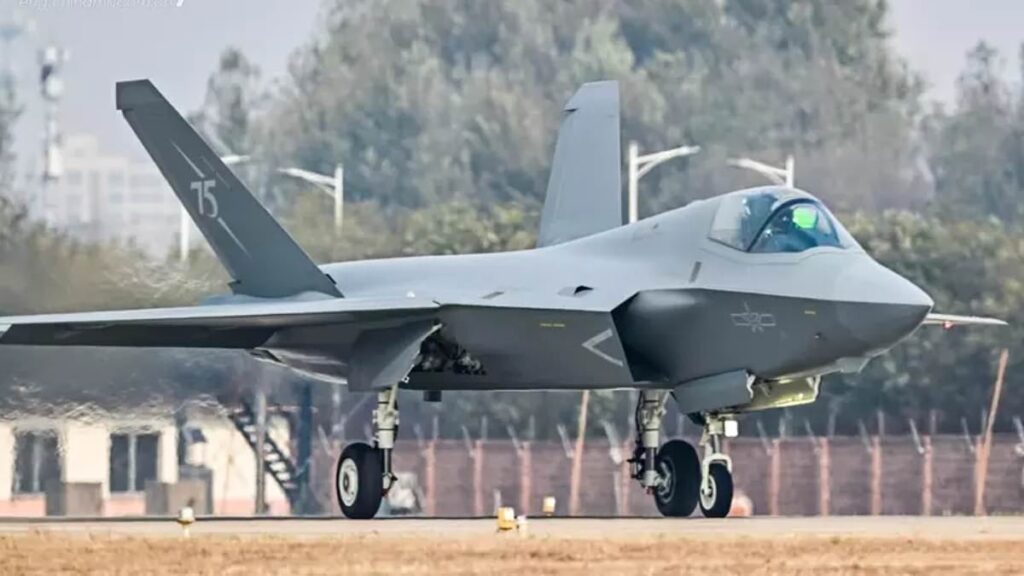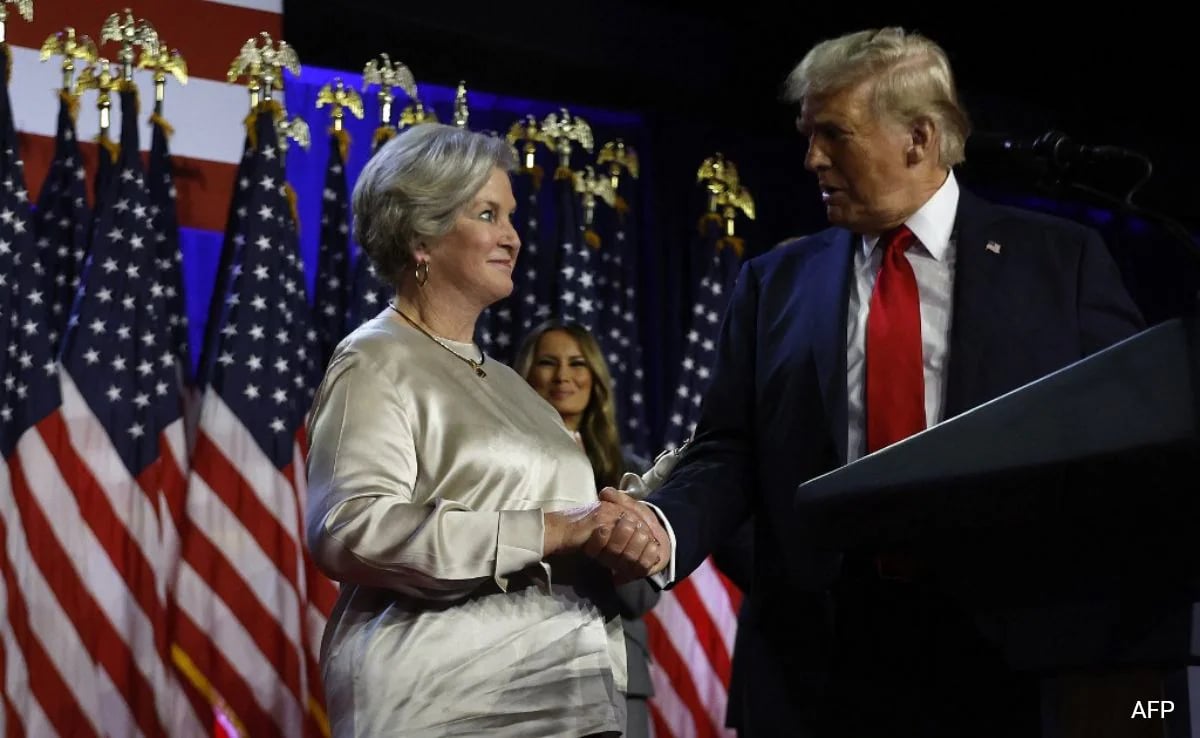China has posted the first official photo of its brand ‘new’ stealth fighter.
But if you feel like you’ve seen it before, there might be a reason for that.
The J-35A jet is rumored to have been built using ‘many terabytes’ of stolen US military data.
A decade ago, documents leaked by ex-US intelligence contractor Edward Snowden laid out the case that radar designs, engine schematics and other top secret specs from America’s $2 trillion stealth F-35 program had been hacked by Chinese spies.
Photographed in a three-quarter profile, taxiing on the tarmac, the new J-35A is the land-based sibling to China’s equally secretive and stealth J-35, which the emerging superpower plans to deploy from its growing fleet of naval aircraft carriers.
The image came a week ahead of the fighter’s November 12 debut at the China International Aviation & Aerospace Exhibition, held at Zhuhai Airport in Guangdong.
At the time of Snowden’s leak, China’s Foreign Ministry spokesman Hong Lei told reporters that ‘the so-called evidence that has been used to launch groundless accusations against China is completely unjustified.’
But the similarities between the Chinese and the American jets are striking — both have the same characteristic internal weapons bays to maintain its radar-evading stealth shape and aerodynamic air-intake channels beneath their cockpits.

China posted the first official photo of its J-35A stealth fighter (above) on Tuesday, teasing the debut of a jet that’s accused of originating with ‘many terabytes’ of stolen US military data
‘For the first time, new equipment such as the medium-weight, stealth multi-role fighter J-35A, the HQ-19 surface-to-air missile and a new type of reconnaissance and strike unmanned aerial vehicle will be on display,’ officials told CCTV state television.
But aside from providing the picture of the J-35A, Chinese military spokesman Colonel Niu Wenbo did not provide further details to CCTV on the new craft.
Both J-35 and J-35A were built off China’s FC-31 stealth fighter prototype, which has been unofficially documented for years in leaks and snapshots, according to military aerospace author Thomas Newdick.
Newdick emphasized that — while espionage likely played a role in the development of China’s fifth-generation stealth fighter fleet — the craft were not outright ‘copies.’
‘Critical outright differences’ are discernable in the new photo, he noted, including twin-engines on the J-35A distinct from the F-35’s massive single turbofan engine, and a more slender and sleek design that avoids the some of the F-35’s design flaws.
The J-35A is also reportedly faster than the F-35, capable of a maximum speed of Mach 2.0, compared to the American stealth fighter’s top speed of Mach 1.6.
A former deputy captain with the Chinese Air Force’s Bayi Aerobatic Team, Zhang Xinmin, told Aaj News that the J-35A had been custom made to withstand harsh conditions, like high-salt and high-humidity environments.
But, as Newdick wrote for The War Zone, ‘clearly many elements’ were ‘at least heavily inspired if not cribbed from the F-35,’ including its ‘diverterless supersonic inlets’ air-intakes on its engines and the shape of its cockpit canopy.
‘Even its official designation [i.e. ’35’] isn’t trying to hide that reality,’ Newdick said.

The clearest previous image of China’s future carrier-borne stealth fighter known as J-35 surfaced in July of 2020 on Chinese social media Weibo (above)

Carrier fighter mockups of the J-35 (right) and J-15 (left) were spotted on the aircraft carrier Liaoning and posted to social media on what was then Twitter but is now X.com
The expensive program to develop and integrate three variations of the F-35 into America’s fighting force has led to at least 29 incidents and accidents over the years.
Last May, an F-35B crashed shortly after attempting a takeoff at Kirtland Air Force Base in New Mexico.
The F-35B is a variant designed for ‘short takeoff and vertical landing’ (STOVL), a bulk-adding technical specification that’s notably absent from both J-35 models.
The J-35 is the second radar-evading stealth jet in China’s military arsenal, after the J-20 ‘Dragon’ which entered service in 2017.
The J-20 is a ‘heavy-duty stealth fighter jet’ and the J-35 is a ‘medium-sized multi-role stealth fighter jet,’ according to Military analyst Wang Mingzhi.
‘The primary distinction is that the J-20 focuses on air superiority missions, while the J-35A is versatile, capable of pursuing air superiority and accomplishing a variety of ground and maritime strike missions,’ Wang explained.
‘In future operations, these two aircraft can precisely target at both land and sea objectives in a coordinated manner, thus playing a crucial role for achieving air superiority,’ the analyst continued in a post for China’s Defense Ministry website.

The expensive program to develop and integrate three variations of the F-35 into America’s fighting force has led to at least 29 serious incidents over the years. Above emergency workers respond to a crash of an F-35B near the Albuquerque International Airport on May 28, 2024
China’s defense ministry said the J-35 was built by the Shenyang Aircraft Design and Research Institute, a subsidiary of the Asian country’s Aviation Industry Corporation.
Heavy state-planning and secrecy characteristic of the communist ‘people’s republic’ has shielded the exact cost for any of China’s stealth fighters from view — but a 2024 report by defense publication Janes priced the J-20 at $110 million.
But extrapolations, based on estimates from Zhou Chenming of Beijing-based Yuan Wang military tech think tank, place the J-35s at about $21 to $36 million each.
‘The price of Chinese self-developed military weapon is normally one-fifth to one-third of the price of a similar US weapon,’ Zhou said. And the current reported cost of America’s F-35s are around $109 million apiece.
‘The J-35 series is designed to be one platform with multiple variants for both Chinese air and naval forces,’ the ministry said.
Analysts, including Newdick, have noted that China’s new stealth fighter’s J-35 version appears to be optimized for takeoff via an ‘electromagnetic catapult launch system,’ onboard China’s latest and state-of-the-art carrier, Fujian.
But photos of fighter mock-ups show the jets will also be deployed from China’s older aircraft carriers like Liaoning and Shenyang, via their ‘ski-jump’ takeoff ramps.

Above, a visual timeline of the China’s progess on the stealth J-35: the original FC-31 airframe (2014), the revised FC-31 (2016), the first J-35 prototype (2021) and an updated J-35 (2022)
German magazine Der Spiegel was the first to publish the cache of Snowden documents in 2015 that revealed a top secret US government presentation alleging China’s theft of ‘many terabytes’ of F-35 program data.
According to sources, the data breach occurred in 2007 — a cyberattack at the prime defense contractor undertaking America’s effort to construct the F-35 Lightning II joint strike fighter jet (F-35B), Lockheed Martin.
Shortly after the Snowden leak, US officials claimed that ‘classified F-35 information is protected and remains secure,’ according to The Diplomat.
China’s cyber-spying operation, which had been code-named ‘Byzantine Hades’ by US investigators, had first been revealed by Wikileaks in 2011.
Investigators claimed that they had traced the origin of some of these past hacks to a specific unit of the Chinese People’s Liberation Army.

German magazine Der Spiegel was the first to publish the cache of Snowden documents in 2015 that revealed a top secret US government presentation (above) alleging China’s theft of ‘many terabytes’ of F-35 program data. Investigators called the alleged op ‘Byzantine Hades’

US officials broadly characterized that ‘Byzantine Hades’ hacking operation as a plot to ’cause serious damage to DoD interests,’ according to the top secret power point presentation
It’s unclear when US officials may have first suspected that ‘Byzantine Hades’ had also been working to obtain stealth fighter secrets from Lockheed.
However they broadly characterized that operation as a plot to ’cause serious damage to DoD interests,’ according to the top secret power point presentation leaked by Snowden.
Pushing back on these accusations, Chinese Foreign Ministry spokesman Hong noted in 2015 that China has sought international collaborations to improve security and prevent hacking.
‘According to the materials presented by the relevant person, some countries themselves have disgraceful records on cybersecurity,’ Hong added.
Infamously, Snowden’s 2013 revelations as a former contractor to the National Security Agency (NSA) revealed a massive and questionably legal spying program by the agency. The revelations sparked international outrage.










